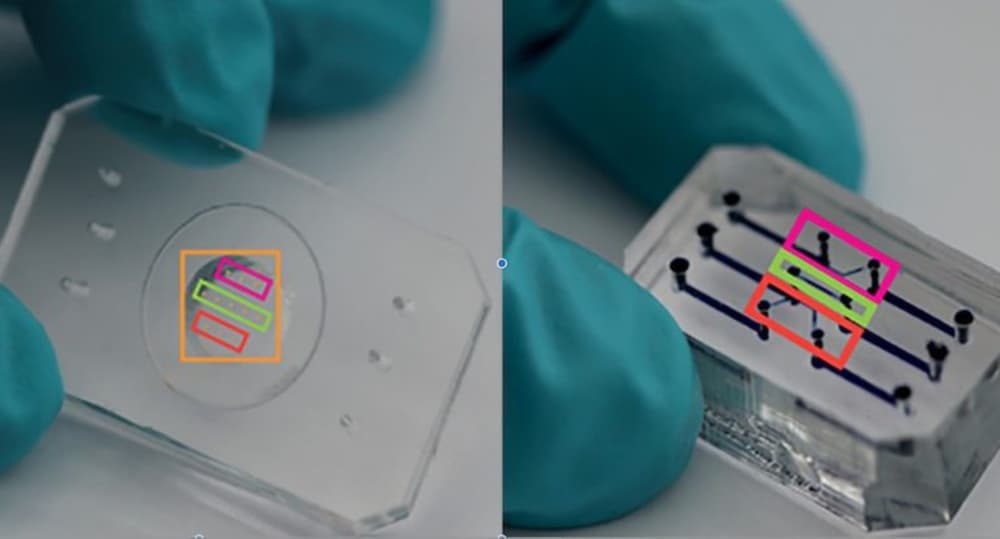AI-powered biosensors are revolutionizing healthcare by transforming wearables from passive trackers into intelligent, predictive tools. These devices enable real-time, personalized health monitoring, helping prevent illness before symptoms appear.
From Wearables to Predictables: How AI-Powered Biosensors Are Personalizing Preventive Healthcare
Written by Sumit Kaushik

With the information age informing choices and technology insinuating itself into every conceivable aspect of life, medicine itself is being redefined. One-size-fits-all medicine is giving way to smart, real-time, and personalized health tracking.
At its core is a new convergence of AI-driven biosensors and wearables technology—the beginning of an era where healthcare is not merely reactive, but predictive and preventive.
Why It's Trending
The transition from conventional care to preventive and personalized medicine is picking up unprecedented speed. These are the reasons why this revolution is sweeping the world:
- Growing demand for proactive management of health after COVID-19.
- Growing adoption of wearable healthcare devices (Apple Watch, Fitbit, Whoop, Oura Ring).
- Technological advances in biosensing technology, providing real-time monitoring without invasiveness.
- Artificial intelligence (AI) and machine learning that facilitate predictive analysis from biosensor data.
- Increasing consciousness of chronic disease prevention and longevity optimization.
These intersecting trends are shifting the scale from wearables that track to biosensors that forecast—essentially turning the healthcare sector on its head.
What are AI-Enhanced Biosensors?
Biosensors are laboratory devices that sense and relay biological information. With AI algorithms, they don't gather data—they learn, process, and forecast healthcare outcomes.
For instance, a biosensor in a smartwatch can track your heart rate variability, skin temperature, and blood oxygen saturation. If such information is integrated with AI, the information can predict upcoming arrhythmias, identify early signs of infection, or even predict stress levels—before symptoms.
These types of sensors today can detect:
- Glucose (non-invasive)
- Water and electrolyte balance
- Breathing rate and sleep quality
- Cortisol and stress biomarkers
- Changes in core body temperature
- Disorders of movement and risk of falling
From Reactive to Predictive: The New Healthcare Paradigm
Old healthcare is based on a reactive paradigm—treat the patient when symptoms arise. But AI-driven biosensors make predictive healthcare possible by detecting deviations in your baseline health measures before they cause problems.
Examples of Predictive Healthcare in Action:
Cardiac care: AI algorithms detect irregular heart rhythms to predict atrial fibrillation risk.
Diabetes control: Predictive AI integrated with continuous glucose monitoring enables optimal diet, insulin therapy, and prevention of hypoglycemic episodes.
Psychological health: Physiological markers of stress are monitored via wearables to anticipate burnout and anxiety before they arise.
Sleep disorder: Real-time oxygen saturation and sleep monitoring can warn users of apnea risk.
This predictive advantage can radically decrease hospitalization, enhance clinical outcomes, and enable end-users to be masters of their own health.
The Power of Personalization
No two people react to diet, exercise, drugs, or stress in the same manner. Biosensors allow hyper-personalized health information, customized to your individual biology and lifestyle.
The Main Personalized Health Applications:
Fitness optimization: AI-powered feedback on recovery, performance, and overtraining.
Menstruation and fertility monitoring: Hormone biosensors predict ovulation or hormonal imbalance.
Chronic condition management: Individualized reminders and treatment plans for hypertension, COPD, or arthritis.
Diet: Customized dietary recommendations based on glucose response, microbiome, or metabolism.
The personalized approach motivates patients to make healthier lifestyle decisions while facilitating clinicians to give data-driven care.
What's Next in Health Tech?
1. Non-invasive diagnostics
We're looking towards a day when blood tests can be replaced by skin patches, breath analysis, or smart tattoos.
2. Digital twins
Your body can be copied by AI as a digital twin, meaning you can simulate what treatments will do to you before you get them.
3. Edge AI and privacy-first biosensors
New biosensors are emerging with on-device AI, i.e., predictions occur on the wearable device itself—enhancing data privacy.
4. Insurance + Wearables = Incentives
Health insurers are exploring joint ventures with wearable firms to reward healthy living through reduced premiums or well-being benefits.
Challenges Ahead
Potential is huge, but there are challenges that need to be overcome:
- Concerns over data privacy and ownership
- Algorithmic bias due to non-diverse training data
- Regulatory ambiguity over how to classify biosensors as medical devices
- User over-use or fatigue of data-driven feedback
- A strategy well prepared to include ethical AI, open data usage, and clinical verification must be employed in order to scale safely.
Conclusion: A Future That Listens to Your Body
From step-counting to breaking codes on warning signs, wearables have made tremendous progress in health. Thanks to AI-based biosensors, your body becomes a 24/7 diagnosis dashboard—one that makes patients and doctors react sooner, smarter, and more accurately. Here are the key facts about health wearables.
The future of medicine isn't all digital. It's deeply human, personal, and progressive—where the smallest signals from your body can make the biggest difference in your path to health.